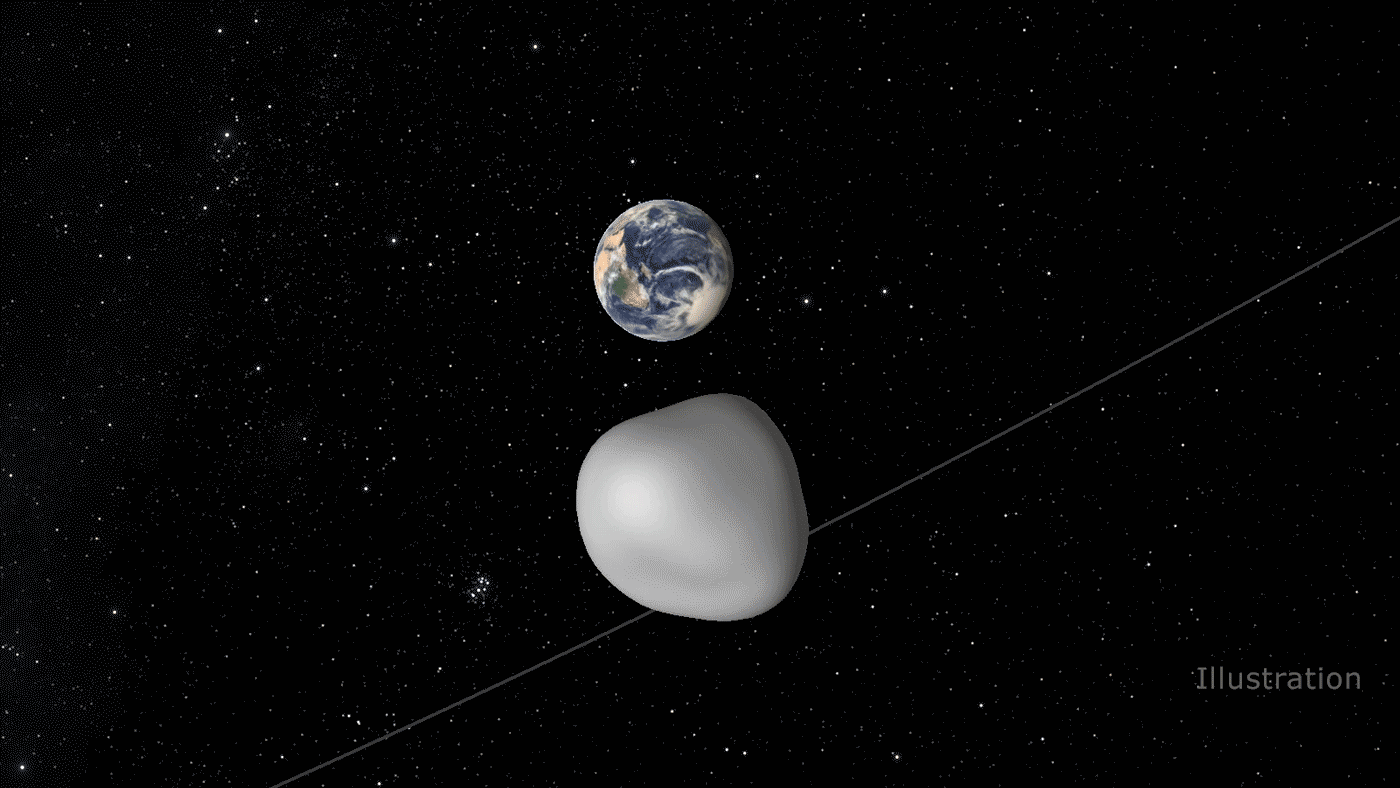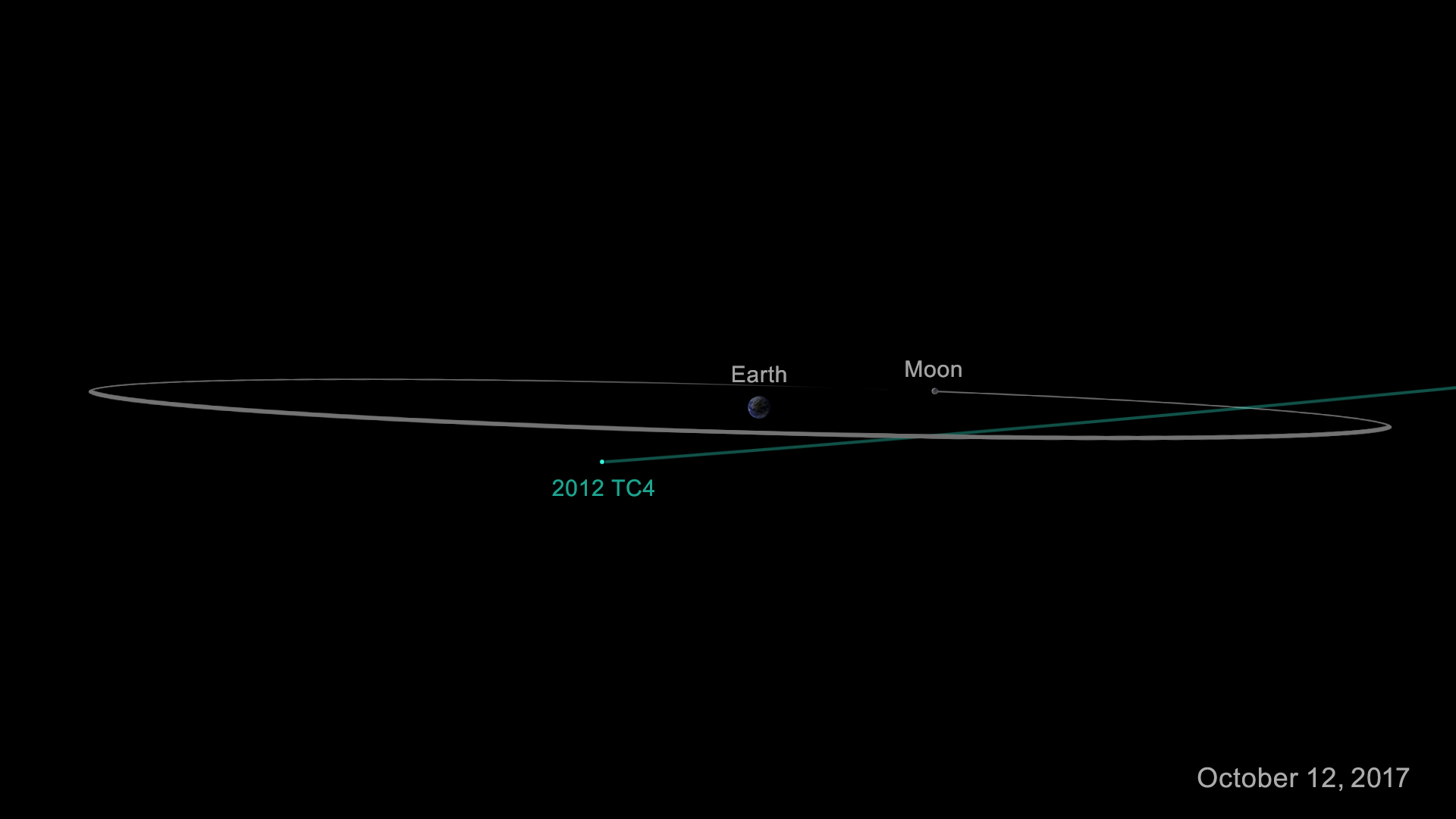Scientists Track Asteroid Flyby of Earth Set for Oct. 12
A space rock is approaching Earth! And although it would be irresponsible to shout "Incoming!" in a hypothetical movie theater and create a panic, asteroid 2012 TC4 will pass quite close to Earth's surface when it zips safely by our planet later this year.
Teams of scientists from NASA and the European Space Agency (ESA) that monitor the locations of near-Earth objects have been tracking asteroid 2012 TC4 with various instruments, including the ESA's Very Large Telescope Observatory. Those observations have made it possible to better predict when the asteroid will make its flyby of Earth, and just how close it will get to the planet. Observing close flybys like this also helps prepare teams to detect a near-Earth asteroid whose course might pose a threat to Earth.
2012 TC4 will fly by Earth on Oct. 12 at a distance of about 27,000 miles (43,500 kilometers), or about one-eighth the distance to the moon. Previous observations suggested the space rock might come to within 4,200 miles (6,800 kilometers), according to a statement from NASA.[Enormous Asteroid 'Florence' Will Safely Fly by Earth Sept. 1]

Scientists are interested in this asteroid not only because of its close approach, but also because of its size: The asteroid is between 30 and 100 feet (10 and 30 meters) across, or the same general size as the rock that exploded above the Russian city of Chelyabinsk in February 2013.
NASA-funded astronomers from the International Asteroid Warning Network (IAWN) — which was formed by a United Nations subcommittee — will be conducting additional observations of the asteroid in the weeks leading up to the flyby "as part of an exercise of the recovery, characterization and reporting of a potentially hazardous object approaching Earth," according to the news release.

"This is a team effort that involves more than a dozen observatories, universities and labs across the globe so we can collectively learn the strengths and limitations of our near-Earth object observation capabilities," said Vishnu Reddy of the University of Arizona's Lunar and Planetary Laboratory in Tucson, who leads the campaign to track and characterize 2012 TC4 for the IAWN. "This effort will exercise the entire system, to include the initial and follow-up observations, precise orbit determination, and international communications."
Follow Doris Elin Salazar on Twitter @salazar_elin. Follow us @Spacedotcom, Facebook and Google+. Original article on Space.com.
Get the Space.com Newsletter
Breaking space news, the latest updates on rocket launches, skywatching events and more!
Join our Space Forums to keep talking space on the latest missions, night sky and more! And if you have a news tip, correction or comment, let us know at: community@space.com.

Doris is a science journalist and Space.com contributor. She received a B.A. in Sociology and Communications at Fordham University in New York City. Her first work was published in collaboration with London Mining Network, where her love of science writing was born. Her passion for astronomy started as a kid when she helped her sister build a model solar system in the Bronx. She got her first shot at astronomy writing as a Space.com editorial intern and continues to write about all things cosmic for the website. Doris has also written about microscopic plant life for Scientific American’s website and about whale calls for their print magazine. She has also written about ancient humans for Inverse, with stories ranging from how to recreate Pompeii’s cuisine to how to map the Polynesian expansion through genomics. She currently shares her home with two rabbits. Follow her on twitter at @salazar_elin.









